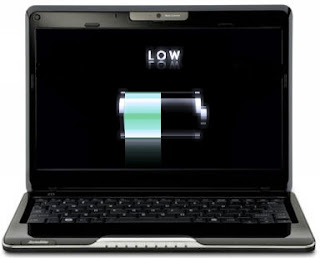You shouldn't have to lose data just because you lost your phone. And switching to a new device should be a lot easier than it is now. ET highlights the tools you need to keep all your data safe.
FOR CLOUD
OneMediaHub: With 500MB of cloud storage, this free service offers cross platform mobile and desktop apps. You can back up all the information you want, including your address book, multimedia and other supported files on to the cloud and sync it back across all your devices. You can also set the mobile app to automatically sync data to the cloud over a Wi-Fi connection.
PhoneCopy: Another cross platform service, PhoneCopy allows you to back up phone contacts, messages & calendar entries and then sync them across devices. They offer apps for all smartphones but it also works with feature phones that support synchronization over a data connection. Synced contacts can be accessed and edited on the PhoneCopy website (www.phonecopy.com)
SanDisk Memory Zone: This multi-faceted free app (Android only) lets you back up any file to your phone's memory card, move files from phone memory to memory card, sync data with your cloud service of choice (just sign in to Dropbox, Box, Google Docs, SugarSync or SkyDrive from within the app). You can also use the password protection feature to keep your data safe.
inDefend Mobile Backup: inDefend (Android only) works even if you have an older device (it works with Android 2.0.1 and up). It can quickly back up your text messages, phonebook, call logs, calendar entries, internet history & settings to their online servers. Download the desktop agent from http://indefend. appspot.com to access all the data backed up by your phone.
FOR PC/MAC
PhoneCopy: Another cross platform service, PhoneCopy allows you to back up phone contacts, messages & calendar entries and then sync them across devices. They offer apps for all smartphones but it also works with feature phones that support synchronization over a data connection. Synced contacts can be accessed and edited on the PhoneCopy website (www.phonecopy.com)
SanDisk Memory Zone: This multi-faceted free app (Android only) lets you back up any file to your phone's memory card, move files from phone memory to memory card, sync data with your cloud service of choice (just sign in to Dropbox, Box, Google Docs, SugarSync or SkyDrive from within the app). You can also use the password protection feature to keep your data safe.
inDefend Mobile Backup: inDefend (Android only) works even if you have an older device (it works with Android 2.0.1 and up). It can quickly back up your text messages, phonebook, call logs, calendar entries, internet history & settings to their online servers. Download the desktop agent from http://indefend. appspot.com to access all the data backed up by your phone.
FOR PC/MAC
Desktop Software: Most phone manufacturers offer their own software to sync their phone to a computer. Usually, this software includes an option to sync phone contacts with Microsoft Outlook or Windows Contacts/Address book. Synced contacts can then easily be exported to various formats such as CSV (comma separated values) or vCards and saved as back up.
MobileGo: This one offers an easy, one-click, data backup solution for Android phones (with merge duplicates feature). However, the contact manager also lets you transfer contacts between Symbian, iOS and Android phones. You can also import or export contacts from Outlook, Windows Address Book or Windows Mail. Get it fromwww.wondershare.com
CopyTrans Contacts: Available only for Windows computers, this free software allows you to quickly backup contacts from your iPhone/iPod Touch or iPad. You can then export the backed up contacts to Gmail, Outlook or iCloud. The desktop client lets you easily view and organise your contacts (remove duplicates) on the computer. Get it fromwww.copytrans.net
Xilisoft Mobile Phone Manager: For Windows Phone only, Xilisoft offers easy contacts backup and restoration over a data cable or Bluetooth. It can back up your text messages, email, calendar entries, favourites and exchange data. You can even view/edit and organise your contacts, call logs and text messages on the PC. Get it from www.xilisoft.com
DEVICE SPECIFIC SERVICES
MobileGo: This one offers an easy, one-click, data backup solution for Android phones (with merge duplicates feature). However, the contact manager also lets you transfer contacts between Symbian, iOS and Android phones. You can also import or export contacts from Outlook, Windows Address Book or Windows Mail. Get it fromwww.wondershare.com
CopyTrans Contacts: Available only for Windows computers, this free software allows you to quickly backup contacts from your iPhone/iPod Touch or iPad. You can then export the backed up contacts to Gmail, Outlook or iCloud. The desktop client lets you easily view and organise your contacts (remove duplicates) on the computer. Get it fromwww.copytrans.net
Xilisoft Mobile Phone Manager: For Windows Phone only, Xilisoft offers easy contacts backup and restoration over a data cable or Bluetooth. It can back up your text messages, email, calendar entries, favourites and exchange data. You can even view/edit and organise your contacts, call logs and text messages on the PC. Get it from www.xilisoft.com
DEVICE SPECIFIC SERVICES
Apple iCloud: If you have an existing ecosystem of Apple devices (both iOS and MACs),iCloud is the easiest way to keep your content synced between them. You can also access all your data from any device by just signing in with your ID on www.icloud.com.
BlackBerry Protect: Available free from www.blackberry. com/protect, this free app keeps a backup of all your data, helps you locate a lost device, remotely wipe it and effortlessly transfers all your data (including email settings) when you switch devices.
BlackBerry Protect: Available free from www.blackberry. com/protect, this free app keeps a backup of all your data, helps you locate a lost device, remotely wipe it and effortlessly transfers all your data (including email settings) when you switch devices.
Source | Economic Times | 17 October 2012


